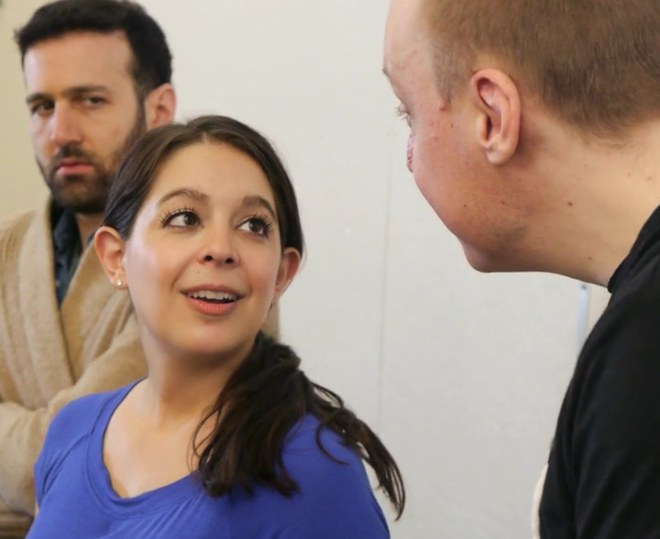It's a bird! It's a plane! It's an actor!
You’ve probably seen aerial work before: Maybe you saw Pink sing at the Grammys in a fabric sling or you were served champagne by a dangling aerialist at a fancy party. Perhaps you’ve seen contemporary circus companies with highly skilled acrobats in a show that follows a general concept or theme.
Theatre makers have begun to integrate aerial into plays and musicals as a way to heighten the drama of the narrative. When theatre incorporates aerialists (performers who physically engage with a suspended apparatus) to enhance the story, it is called aerial theatre. Aerial can be used in the staging of scripted text-based plays as well as in devised, wordless, and multidisciplinary storytelling. While aerial theatre can sometimes resemble contemporary circus or aerial dance, what distinguishes it as a form of physical theatre is its commitment to furthering the narrative. This includes relating the aerial work to specificity of character, environment, and through line of the story.
“Aer” is from the Greek word meaning air or atmosphere, and for centuries humans have been utilizing the airspace for the practical purposes of transportation and research. Using the airspace artistically, as a theatrical canvas, can be both thrilling and unsettling for the audience, which makes it a keen tool for visceral storytelling. The stakes of the character in the story are heightened by the stakes of the actor in the air. The risks look real, but the performers are highly trained. Different forms of aerial take different amounts of time to learn, but most performers train for years at circus schools and/or with coaches before they are able to safely perform aerial work.
Aerial theatre has existed in Europe for a few decades and is a growing genre in North America. Companies like Vesturport (Iceland), Kneehigh (Cornwall), and Compagnie du Hanneton (France) tell stories that include aerial work. North American companies that merge theatre and aerial include Paper Doll Militia (Los Angeles/Edinburgh), Only Child Aerial Theatre (NYC), AiRealistic (NYC), Constellation Moving Company (NYC), Fight or Flight Theater (NYC), Ripe Time (NYC), and No Parachute Theatre (Toronto). Over the last few years, big-budget aerial theatre has even made its way to Broadway, such as the circus-infused, Tony-winning revival of Pippin and Cirque du Soleil’s debut Main Stem show Paramour.
Aerial theatre can include many different types of aerial apparatuses: fabric (silks or tissu), rope (corde lisse) or the similar Spanish Web, aerial hoop (lyra, circeau), many variations on the trapeze, straps, cloud swing, sling (hammock), harness, bungee, pole, custom-built apparatus…the list goes on! The use of these apparatuses as aerial theatre can be literal or poetic, simple or virtuosic, as long as they serve the story.
— Nicki Miller and Kendall Rileigh of Only Child Aerial Theatre
This video was created by TDF and Only Child Aerial Theatre.

